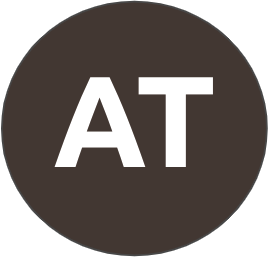New Council on Environmental Quality NEPA permitting reforms
The White House Council on Environmental Quality (CEQ) today finalized a rule to “modernize the federal environmental review process under the National Environmental Policy Act (NEPA).” The rule is a combination of two objectives issued to the CEQ:
1) The debt ceiling deal passed in May 2023 (a.k.a. the Fiscal Responsibility Act) included a number of NEPA permitting reform requirements. I discussed those previously here.
2) On his first day in office, President Biden issued an Executive Order on Protecting Public Health and the Environment and Restoring Science to Tackle the Climate Crisis. That executive order directed federal agencies “to immediately review and, as appropriate and consistent with applicable law, take action to address the promulgation of Federal regulations and other actions during the last 4 years that conflict with these important national objectives, and to immediately commence work to confront the climate crisis.” The previous administration had proposed some NEPA permitting reforms, and as directed by this executive order, CEQ reviewed and revised those.
Here are some of the permitting changes established by this new rule:
Improving federal agency permitting efficiency
Consistent with the requirements in the debt ceiling deal, the new rule directs federal agencies to establish a lead agency in charge when multiple agencies are involved in a project's permitting, and for the agencies to all work together on a single environmental document to avoid duplicative efforts. They have to complete environmental assessments and impact statements within 1 and 2 years, respectively “unless the lead agency, as applicable in consultation with any applicant or project sponsor, extends the deadline in writing and establishes a new deadline providing only as much time as necessary to complete." And those documents now have specific page limits.
More categorical exclusions, where sensible
The rule expands the application of categorical exclusions, which are the fastest type of permits that are applied when there's good reason to be confident that a type of project won't have significant adverse impact. For example, the rule says that if one federal agency applies a categorical exclusion for a certain type of project, then other federal agencies can simply adopt that same categorical exclusion.
The Department of Energy (DOE) also issued a separate Categorical Exclusion Rule that adds a categorical exclusion for certain energy storage systems and solar projects on disturbed lands, and for upgrading electrical transmission lines of any length.
Accounting for climate change and environmental justice
Consistent with the president's executive order, the rule tells federal agencies that they should consider the effects of climate change in environmental reviews and encourage identification of reasonable alternatives that will mitigate climate impacts. And they should also account for environmental justice considerations and encourage measures to avoid or reduce disproportionate effects on communities, including the cumulative impacts of pollution.
Some folks aren't happy to see these particular changes because they tip the scales specifically toward clean energy permitting reform, but we think it's a big win for federal agencies to take climate change into account in permitting decisions.
Improving early community involvement
The CEQ guidance had previously referenced “public involvement,” but in this new rule revised that to “meaningful public engagement” in order to emphasize the importance of engaging with communities, rather than potentially just notifying them about permitting decisions. It's left up to federal agencies to determine the appropriate methods of public engagement for their proposed actions.
Some critics argued that this change could open up permitting projects to more litigation, because stakeholders could claim that they were not engaged sufficiently ‘meaningfully.’ But I tend to think that by requiring this sort of early community engagement and input, it should result in fewer aggrieved parties and lawsuits overall.
It's a good start, but we still need Congressional permitting reform
These are generally good changes that will help expedite the permitting process. The DOE also issued a helpful new transmission permitting rule last week. But there's still more to be done. For example, in a comprehensive bipartisan clean energy permitting reform package we still want to see the BIG WIRES Act and other transmission-related legislation passed, as well as measures to speed up the permitting of some other important clean technologies like geothermal, nuclear, and hydroelectric power.
The job isn't done yet, but these rules are are a good start moving permitting reform in the right direction 🤓
Search Forums
Forum help
Select a question below
CCL Community Guidelines
- Discuss, ask and share
- Be respectful
- Respect confidentiality
- Protect privacy
CCL Blog Policy Area Categories
- Price on Carbon
- CBAM
- Clean Energy Permitting Reform
- Healthy Forests
- Building Electrification and Efficiency



